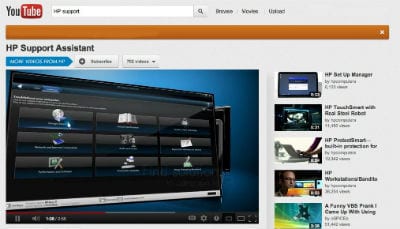 More and more companies are starting to tinker with online video, whether it’s to connect workers in the field with their home office, or to post how-to clips for customers online. The benefits are potentially huge — saving unnecessary truck rolls, relieving some pressure from customer support teams, and helping techs make a successful fix on their first visit. John Ragsdale, who’s been championing streaming video for a while now, talks about ways companies can tap into the video market.
More and more companies are starting to tinker with online video, whether it’s to connect workers in the field with their home office, or to post how-to clips for customers online. The benefits are potentially huge — saving unnecessary truck rolls, relieving some pressure from customer support teams, and helping techs make a successful fix on their first visit. John Ragsdale, who’s been championing streaming video for a while now, talks about ways companies can tap into the video market.
Article re-published with permission.
Yesterday I had the privilege of speaking with Caitlin Spaan, VP of Marketing for Ooyala, a very cool company enabling streaming video content delivered to iPhones, iPads, Android devices, Facebook, YouTube and more. I’ve published a lot of research over the last 2 years on mobility and video in service, and I’m starting to receive more questions from TSIA members about how to get started in this area.
Streaming video has several use cases for service. For education services, shifting from classroom training to OnDemand video training requires a lot of work not only to create the video content, but figure out how to deliver it to customers when they want, on the device they want, with high quality and consumption tracking. For support services, tutorials and “how to” videos are an excellent way of increasing self-service success — let’s face it, Gen Y customers are unlikely to search your knowledgebase or read your FAQ list. The mobile aspect of this is important, because early adopters created some fun online video sites using Flash, which of course isn’t consumable on popular mobile devices. Whatever content you decide to make available to customers must be accessible across all the flavors of mobile devices. There is no faster way of alienating a customer than to say, “Here’s all this great online content, but you can’t view it because you have a droid.”
Ooyala to the rescue. This Silicon Valley-based company enables content management and streaming of online video solutions for multiple audiences, including media companies (ESPN, Miramax, US magazine) and brand companies (Sephora, Victoria Secret, REI, Dell). On the brand side, Ooyala is working with companies to deliver training and support content, including makeup tips and “how to” videos for Sephora (who needs RuPaul’s Drag U?), video tutorials from REI on everything from fixing a flat bicycle tire to getting started kayaking, and Dell, who is using Ooyala as a video solution for sales (product overviews and feature demos) as well as support tutorials.
We are seeing companies get started with service videos on YouTube (including HP’s stellar YouTube channel, which I mentioned in my book, Lessons Unlearned), and that is a great place to get your feet wet. But when you want more control over the video streaming, including charging for content (key for education services) and/or inserting paid ads into content, a solution like Ooyala is required. Just to show how dedicated Ooyala is to customer success, their senior vice president of customer success is none other than longtime SSPA/TSIA board member Dave Hare, a Silicon Valley service legend, who ran service operations for PeopleSoft, Oracle and Symantec before joining Ooyala.
For more from John Ragsdale, visit his blog, Ragsdale’s Eye on Service.
More: Video Tutorials: A Cheap, Brilliant Field Service Solution.
Click here to download a free whitepaper, “Five Steps to Make Field Service Profitable.”

Share this: